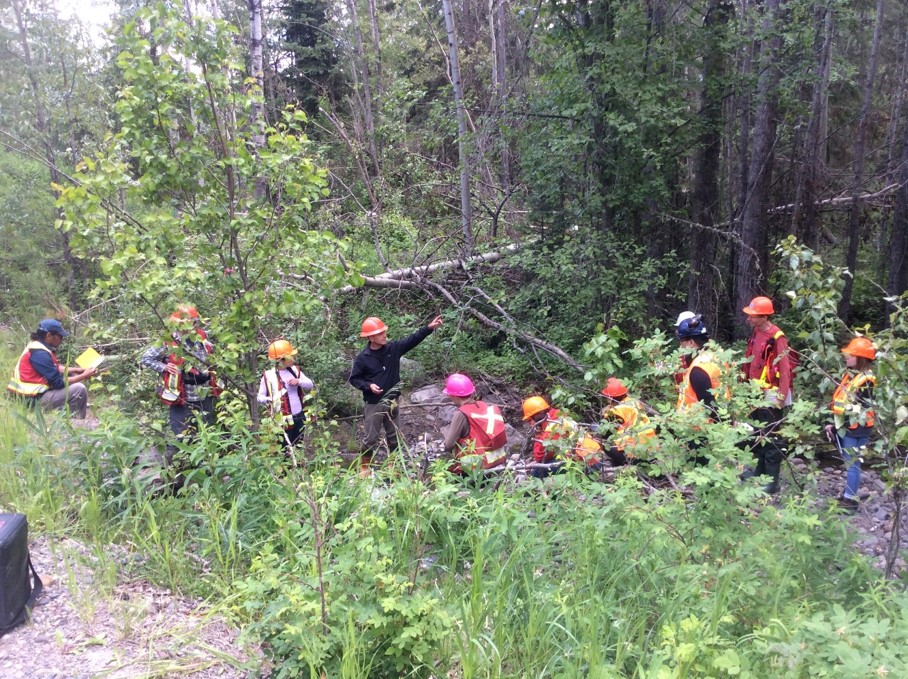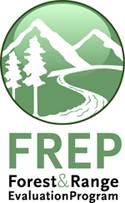Riparian/Streams Protocol Self-Guided Training
Routine Riparian (Stream) Effectiveness Evaluation
The primary goal of this course is to help prepare FREP assessors for field-oriented training in riparian/stream assessment. The field-training is rigorous; therefore, we have created this online course so that FREP assessors will have basic knowledge of the Riparian Management Routine Effectiveness Evaluation (RREE) process, terminology, procedure, and practices. These concepts will be more fully utilized during the field-based RREE training.
At the end of this training you will be familiar with the process of performing RREE assessments and thus be able to practice the assessment skills more confidently while attending a field training session.

Introduction
This Forest & Range Evaluation Program (FREP) riparian self-guided training will help you prepare to attend the Routine Riparian Effectiveness Evaluation (RREE) field training. Gaining a baseline understanding prior to attending the training session will enable you to optimize your learning outcomes and be ready to conduct assessments as soon as possible with efficiency and greater confidence.
Who Should Take This Course?
The course is intended for foresters, technical staff and First Nation partners who conduct RREE assessments as part of the FREP Stewardship Monitoring Program.
Learning Objectives and Format
Upon successful completion of the course, you will have an understanding of the basic background information needed for FREP riparian/stream sampling.
-
Understand why FREP monitoring is undertaken each year
-
Understand the concept of Properly Functioning Condition
-
Understand how to determine reach eligibility for sampling
-
Navigate through the RREE checklist
-
Know the steps required to conduct RREE sampling
-
Understand the optimal field conditions for effective and safe RREE sampling
-
Review the reference materials that will assist you in RREE sampling after completing the training
-
Understand the basic terms related to RREE sampling
The course is a self-directed tutorial comprised of 6 lessons or modules. Each lesson contains summarized information from the protocol, field guide and checklist. You will also find many images presented to help you understand concepts. Throughout this course you will find references to the protocol, field guide and checklist. If you want more specific information on any of the areas you are studying, then refer to these documents.
How Will I Be Evaluated?
You are encouraged to evaluate your learning by completing the self-check exercises at the end of each lesson. To get the most out of the course, you are advised to complete these exercises prior to attending the field training. They don’t take long and will help you review the concepts that you have worked through.
How Much Time Will the Course Take?
Although you are encouraged to set your own pace through the material, it is anticipated that you will need between two to four hours to complete the course, depending on your prior knowledge and the level of detail you need. The modular design of the course means that you can create your own learning path through the lessons, depending on your requirements.
Course Modules
This course is intended to provide overview and summary information. The protocol, field guide and training will provide greater depth of context to help assessors in their understanding.
Please review the full protocol prior to commencing lesson one: RREE protocol. Also please ensure you have the protocol available as you work through the lessons.
Lesson 1: Introduction to FREP
Lesson 2: Training & Field Work Prep
Lesson 3: RREE Assessment Overview
Lesson 4: RREE Checklist Design
Lesson 5: Introduction to Field Indicators (Part 1)
Lesson 6: Introduction to Field Indicators (Part 2)

Link to riparian/streams protocol documents
For questions about wetland training, please contact FREP@gov.bc.ca
